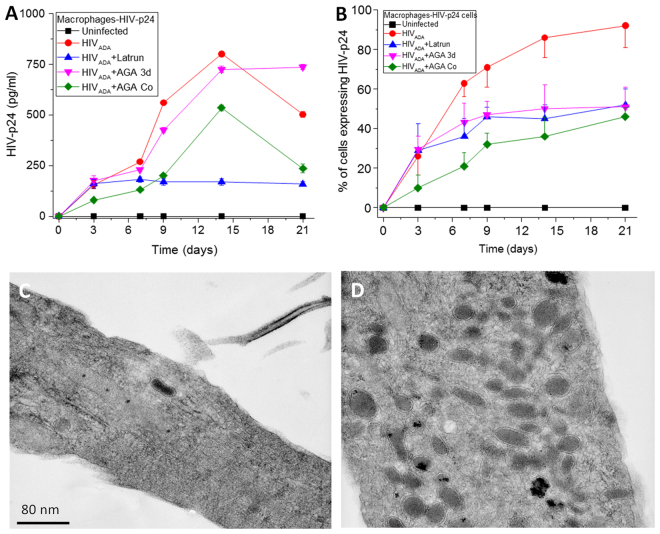Figure 4.
TNT formation and functional gap junctional communication are required for effective HIV-replication and HIV-spread. Macrophages were infected with HIV using the 2 protocols described in Fig. 3. (A) HIV-replication was determined by the amount of HIV released into the media by ELISA. Uninfected, HIV infected cultures, HIV-infection plus latrunculin (a TNT blocker, 1 nM), or HIV-infection plus co-application of the GJ blocker cultures indicated that blocking formation of TNT or gap junctions reduces release of the virus (all points, p ≤ 0.005, n = 3). The only no significant treatment was HIV-infection plus acute AGA may be due that we allowed 3 days of replication with the significant cell to cell spread of infection. (B) Quantification of the HIV-p24 positive cells in panel (A). All blockers reduced the spread of HIV-p24 as compared to HIV infection alone (all points, p ≤ 0.0001, n = 3). (C and D) Transmission electron microscopy (TEM) analysis of a perpendicular section of a TNT in HIV infected conditions. In both cases, no HIV virions were detected inside of the TNT. However, mitochondria were concentrated in areas where TNT are formed. Thus, the entire virion is not transferred by TNTs.

